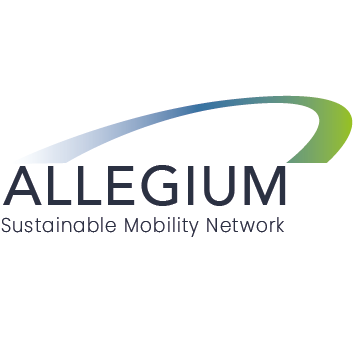Eco-Driving
Complementary to dedicated safety training, Allegium offers fuel economy training conveying a driving style known as “Eco-Driving”. Eco-Driving means driving more fuel-efficient and safer at the same time. Applying this smart and relaxed driving style saves fuel and enhances personal driving safety without slowing down eco-drivers or traffic. On the contrary, anticipatory driving as one of the Eco-Driving core principles makes traffic more fluent and reduces traffic jams. Therefore, Eco-Driving training is genuine on-road safety training and a perfect example for sustainable mobility.
Advanced engines and transmissions are highly fuel-efficient if used adequately. Exploiting the the synergy of driver behaviour and state-of-the-art technology is considered as THE measure to improve individual, company or even national CO2 footprints. This can be achieved best by dedicated on-road Eco-Driving training. Due to its multiple benefits, Eco-Driving education is an efficient measure. As proven in many field tests around the globe, drivers learn to reduce fuel consumption by 5 to 15% long-term in every-day driving. This not only saves money but also cuts down CO2 emissions for the climate’s benefit.

Benefits of Eco-Driving
Eco-Driving consists of driving techniques to get the optimum out of modern vehicles and engines. This smart driving style reduces fuel consumption, saves money and lowers CO2 emissions. On top, focussing on traffic anticipation brings about distinct health & safety advantages.
Safety Benefits
- Improved road safety
- Enhanced driving skills
Financial Benefits
- Lower fuel costs
- Lower vehicle maintenance cost
- Reduced accident cost
Environmental Benefits
- Reduced greenhouse gas emissions
- Improved air quality
- Noise reduction
Individual & Societal Benefits
- More responsible and co-operative driving culture
- Stress-reduced driving
- More comfort for passengers
Eco-Driving Techniques
In order to save fuel and money and simultaneously improve road safety and quality of life by reducing emissions, noise and stress levels, the following “Golden and Silver Rules of Eco-Driving” were thoroughly defined:
The „Golden Rules“ of Eco-Driving
(reference: www.ecodrive.org)
#Rule 1
Anticipate the flow of traffic
Read the road far ahead and anticipate the flow of traffic. Anticipatory driving avoids unnecessary sequences of acceleration and braking to better exploit vehicle’s momentum and enhances road safety at the same time
#Rule 2
Maintaining steady speed at low rpm
Drive smoothly in the highest possible gear at low rpm. Unnecessary speed peaks with consecutive braking necessity is a waste of fuel.
#Rule 3
Early shifting-up into next gear at around 2,000 rpm
Early gear-shifting at low rpm – depending on vehicle specifics- is key for low fuel consumption and smooth driving.
#Rule 4
Checking tyre pressure regularly
The correct tyre pressure is an easy way to safe fuel. Check once a month and before longer trips.
#Rule 5
Minimizing the consumption of extra energy
Employ air-conditioning or other energy-consumers only if needed. Remove unnecessary load or superstructure
The „Silver Rules“ of Eco-Driving
(reference: www.ecodrive.org)
- Avoid short trips: The engine doesn´t reach its optimum operating temperature which increases fuel consumption and wear and reduces durability.
- Drive-off immediately after starting the engine: You won´t be able to bring the engine to optimum operating temperature by having it idle.
- Don´t push the throttle while starting the engine.
- Switch-off the engine at stops presumably longer than 20 seconds (or use automatic “start/stop” if available) with the ignition still on.
- Keep windows closed when driving at higher speeds to avoid aerodynamic drag.
- Use low friction oils and low energy tyres.
- Have your car checked regularly.
- Choose a low-emission car with consumption display. Automatic cars must have advanced gearboxes. Diesel vehicles must be equipped with particulate filters.
- Consider alternative means of transport occasionally.
